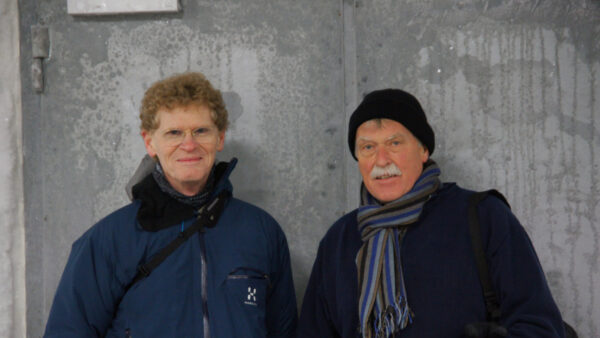As we turn the corner on COVID, businesses are asking: how to design the 21st century workplace?
After a year and a half of a pandemic, and businesses having to quickly shift from working in-house to working remotely, seed companies have had their business plans flipped on their heads.
But after a long 18 months, it’s time to reevaluate. How has COVID-19 affected businesses? Is remote work possible long-term? Do businesses really need physical offices?
The seed sector has been asking these questions frequently within the last year. So, is remote work here to stay, or will companies be returning to “business-as-usual?”
The Switch to Remote
According to Doug Miller, executive director of the Canadian Seed Growers’ Association (CSGA) based in Ontario, working remotely prior to the pandemic is a completely different ballgame.
Miller has been a “remote work warrior” for five years, going from living/working in a small condo to leaving the city during the pandemic.
“Now, I feel that there’s a sense that we’re all in this together,” Miller says. “We’re all working remotely and its great.”
Prior to the pandemic, Miller says being the only one on a team working remotely could be a somewhat isolating experience.
“Sometimes you’d feel like you’re on an island by yourself,” he says, but adds he had the benefit of working in a hybrid model. “Sometimes I’d work at home, sometimes I’d go into a shared office workspace. Now, we need to be able to define the way to move everyone forward in the world of work.”
By comparison, Spike Craven, president of Iowa’s Integrity Communications, says the transition to remote work has been difficult.
“All of the work that my organization did with our clients was in person,” Craven says. “When all of a sudden you can’t be meeting in person, that can pose a grave danger to one’s business and livelihood.”
Initially, Craven says he resisted working from home.
“I thought it would pass and that we didn’t need to pivot the way we did business,” Craven says. “We eventually understood, as many did, that this was not the case. We made a significant investment in really adding to our business model so we could work with our clients in a more digital way.”
Ultimately, Craven says remote work has offered the chance to work with clients that he might not have been able to work with before.
“Our virtual offering has allowed us to invest in the chance to work with India, Japan, Singapore, Brazil and more clients in those spaces,” he says. “It’s been a challenge, yet it has provided opportunity at the same time. Challenge comes with opportunity, and that’s what we’ve had to look at this year.”
Is Remote Work an Option for Seed Companies?
For a lot of seed companies, though, staying at home is not an option, Craven says.
“Those companies need to be present in front of that grower because they’re going to put something in the ground,” he says. “On the other hand, you have folks in research, and that’s been a struggle because not everyone is back in the lab unless it’s something mission critical.”
In addition, Craven says there’s a lot of people in research that don’t work in the lab, and instead work in cubicles.
“There’s been an unfortunate disconnect because you don’t have those water cooler discussions, and you don’t see people in the hallways,” Craven says. “Over the past 16 months, there’s been a lot of adaptation to that, but it’s still not the same.”
Miller agrees. “Depending on the size and scope, CSGA members have a lot of different activities ranging from growing, conditioning, processing to selling,” he says. “Last time I checked, you can’t grow seed remotely, so there’s a lot of challenges here for our members on how they’re able to go about their day-to-day.”
Luckily, the work CSGA does was considered to be an essential service, so CSGA was able to maintain its schedule, but had to adapt and change, Miller says.
“We had to put new digital processes in place, like digital crop certificates and COVID related business processes, to ensure business continuity.”
Miller says when considering remote work, you can’t just flip a switch and expect everyone to go remote.
“You can’t just throw them in and hope that everything is going to be OK,” Miller says. “Hope is not a strategy when it comes to remote work. You need to be able to have a framework in place that’s able to provide support to your employees.”
Know that without a strategy, remote work has the chance to fail. What’s the key to success in a remote world?
Miller says communication is the answer.
“Hyper communication is key within a remote world,” he says. “The future is going to be a wild frontier. It’s about having a playbook or set of rules and engagements for your employees to build on and move forward.”
In addition, setting up employees for success is imperative. Providing the right tools, such as monitors or standing desks like you would in an office, needs to be thought about in a remote world as well.
However, Craven notes that it’s important to remember that working virtually is completely different than in person.
“Some folks may still retain a stigma about returning to the office,” Craven says.
Craven says there are some issues with virtual, such as Zoom fatigue after long meetings, that you might not have while in person.
“I might argue when a person works from home, they are potentially more fatigued and more pressured than that person that is afforded the opportunity to come into the office,” he says.
“It’s critically important for organizations to understand that we’re probably going to have to meet in the middle, where it’s not a full-on work from home, and it’s not a full-on back to the office.”
Miller says one benefit of the pandemic was the opportunity provided to open companies’ eyes to remote work. While there are challenges, such as not being able to shut off the Slack chat, clear communication can alleviate issues.
“Moving forward, it’s about establishing boundaries and a playbook. That’s all embedded within your company’s culture and how you interact in this new digital world.”
Craven agrees — setting expectations and communicating them is important to the future of remote work.
“Just because you’re working from home doesn’t mean that you can show up on your Monday morning meeting Zoom call in a t-shirt and bedhead,” Craven says. “For some, that expectation hasn’t been clearly established.”
By establishing clear balance and expectations, remote work might be a possibility for the future.
Returning to the Office
For many, a return to the office is a necessity. Not all employers will decide to move to a remote model, and not all employees will want one. But for Craig Reed, chief procurement officer for Corteva Agriscience based in Indiana, it isn’t as simple as just going back to the office full-time.
“We’ve realized that there’s a large portion of our workforce that would like to continue in some form of flexible model. So, we will have site-dedicated jobs which would mean you continue to work five days a week on site. We will have a segment of jobs that can be flexible, and we’re looking at one to four days a week in the office. Finally, we have a subset of our workforce that can be totally remote,” he says.
“If your work can be done remotely and still meet the requirements of your role, then there’s no need to be in an office all the time. Everyone is different, and every role is different. For us, it’s about how do we provide the most flexibility that continues to meet our business needs as we continue to meet the overall requirements of our employee base as well.”
Balancing the needs of a business with the needs of employees is a challenge, of course, and a hybrid model may not always be possible.
Jade Reeve, program manager for the Canadian Agricultural Human Resource Council, says many people have become used to the flexibility of working from home. No traffic, a more flexible dress code, and being able to work in your own familiar surroundings are all perks that many have become accustomed to and may not want to completely lose should they need to go back to the office.
“It’s important to connect with the employees and really get their feedback so that they feel they’re a part of the decision in coming back to the office. What is it they need to feel supported to come back? Many people enjoy not having to commute. Some find they are more productive,” Reeve says.
“If those people really do need to go back to the office, employers can make it easier by helping it be a positive transition. There are ways to do that, but it requires communicating with the employees to come up with a new model that allows them to somehow have the best of both worlds.”
Mark Metcalfe, president of Nexeed based in Manitoba, is looking at having most, if not all, of Nexeed’s employees return to the office. In fact, the company is building a new location to house its operations.
“My personal work situation has been very much a hybrid mode these past number of months. There have been some aspects about it that have been good. I like the variety of being at home a little bit. I’ve also noticed there are stretches where I do come in three, four or five days in a row to the office for various reasons. That gets a little tiring, too. I’m pretty sympathetic to some of the advantages that come with being at home,” he says.
“At the same time, I’ve noticed some real challenges around the lack of informal communication that that you would get at the office. A lot of things just kind of happen organically when people are together. How do you do that when everyone is scattered? We certainly will build in some flexibility, of course; it’s not like nobody is ever allowed to work from home ever again. That said, we need most people in the office most of the time.”












